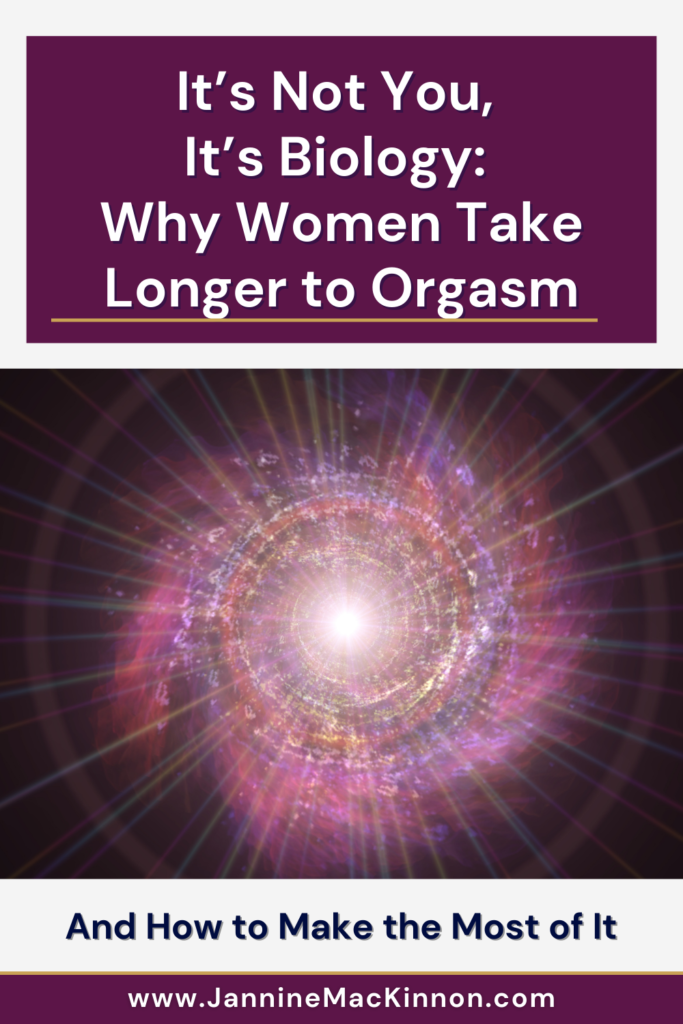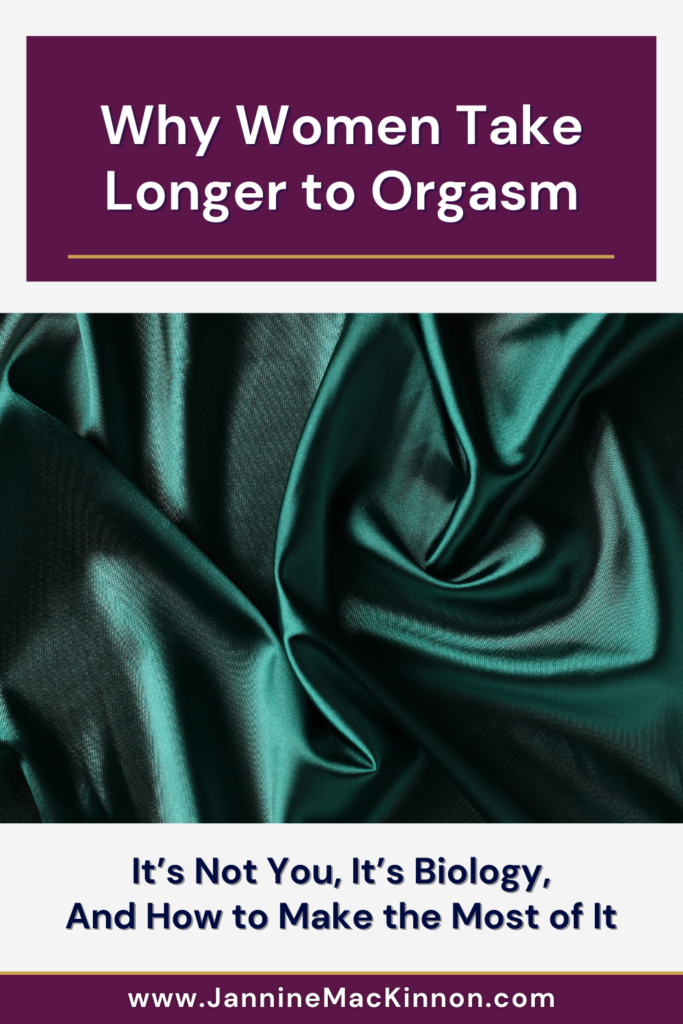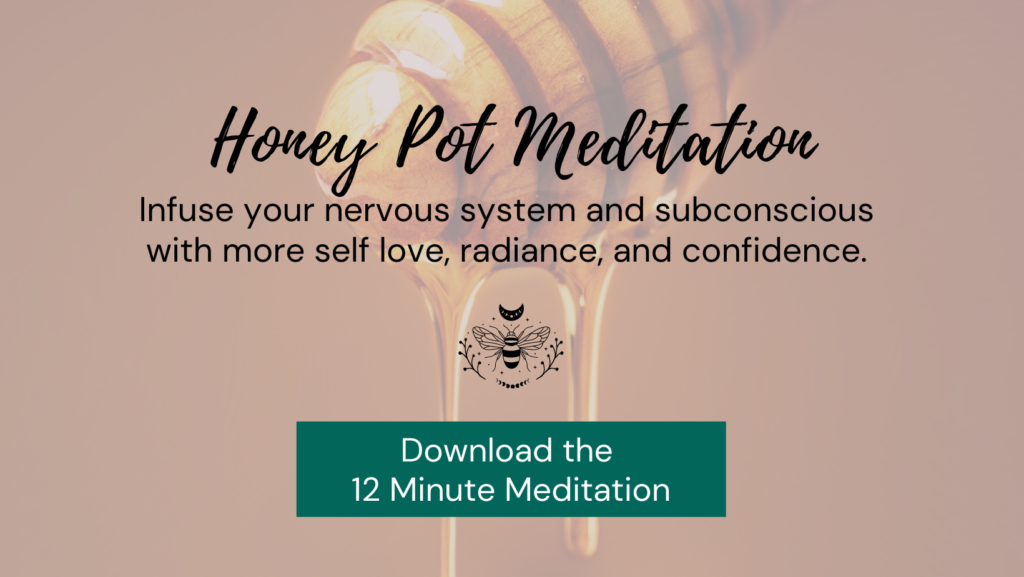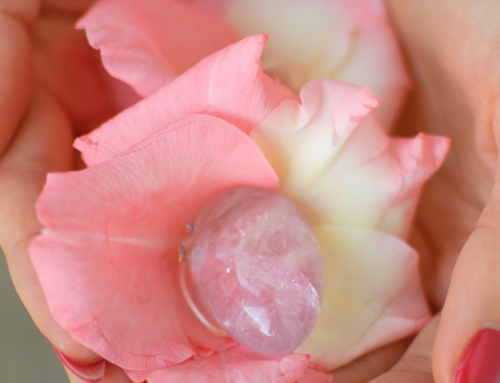When it comes to sex and pleasure, there’s a common misconception that women should be able to orgasm quickly and easily—just like we often see in movies or adult content. But if you’ve ever felt like you’re “taking too long” to reach climax, let’s set the record straight: You are not broken. The truth is, women’s bodies are biologically wired to take longer to become fully aroused and orgasm, and understanding why can transform your pleasure and intimacy.
Rather than seeing this as a problem, what if you embraced it as an opportunity? A slower, more intentional approach to arousal doesn’t just lead to more satisfying orgasms—it deepens connection, enhances pleasure, and makes sex more fulfilling for both partners. In this article, and podcast episode, we’ll explore the science behind female arousal, why emotional and physical factors play such a big role, and how you can work with your body (rather than against it) to maximize pleasure.
Listen to the Episode:
It’s Not You, It’s Biology: Why Women Take Longer to Orgasm (And How to Make the Most of It)
- The Big Misconception: Sex Should Be Fast and Easy
- The Female Arousal Curve
- The Role of Safety, Trust, and Connection
- The Pressure to Orgasm and Why It Backfires
- Reclaiming Your Pleasure Through Mindful Sensation
- Why Slowing Down Enhances Orgasms for Everyone

The Big Misconception: Sex Should Be Fast and Easy
One of the biggest myths surrounding female pleasure is that it should happen quickly and effortlessly, just like we often see in movies or adult content. These unrealistic portrayals can lead to frustration, self-doubt, and feelings of inadequacy when real-life experiences don’t match up.
The truth? The female orgasm isn’t something that happens in an instant. Women naturally take longer to become fully aroused and reach orgasm compared to men, and that’s not a flaw—it’s biology. Instead of rushing the process, embracing a slower, more intentional approach to pleasure can make sex more fulfilling for both partners.
The Female Arousal Curve
Research shows that, on average, women take 20-30 minutes to become fully engorged and ready for penetration. Once fully aroused, it takes another 14 minutes on average to reach orgasm. Compare that to men, who can often reach climax in just a few minutes, and it’s no wonder there’s sometimes a mismatch in timing.
This isn’t a problem—it’s simply how the female body is designed. Full-body arousal, where blood flow increases to the genitals, nipples, and other erogenous zones, is essential for deep pleasure. When this process is rushed, sex can feel unsatisfying, uncomfortable, or even painful.
Rather than seeing it as “taking too long to orgasm,” reframe it as an opportunity to explore, build anticipation, and experience longer-lasting pleasure.
The Role of Safety, Trust, and Connection
For women, arousal isn’t just about physical stimulation—it’s deeply tied to emotional safety, trust, and connection. Feeling emotionally supported and secure in a relationship significantly impacts how easily a woman can become aroused and reach orgasm.
Stress, unresolved tension, or feeling disconnected from a partner can all act as barriers to pleasure. Studies show that women who feel emotionally connected to their partners experience greater sexual satisfaction and more frequent orgasms. This is because emotional intimacy fosters relaxation, which is essential for allowing the body to respond to pleasure.
There are many types of connection that contribute to arousal and intimacy, including:
- Emotional connection – Feeling seen, heard, and valued by your partner.
- Intellectual connection – Engaging in stimulating conversations and sharing ideas.
- Energetic connection – Tuning into each other’s presence and unspoken energy.
- Spiritual connection – Sharing beliefs, values, or experiences that create a deeper bond.
- Non-sexual physical connection – Holding hands, cuddling, or gentle touch without the expectation of sex.
- Sexual connection – Open communication and mutual exploration of pleasure.
Strengthening these connections can help create a foundation of trust and security, making arousal and orgasm more accessible and enjoyable.
The Pressure to Orgasm and Why It Backfires
Another common obstacle to orgasm is the pressure to “perform.” Many women feel an unspoken expectation to orgasm quickly, whether from themselves or their partners. Ironically, this pressure is one of the biggest arousal killers.
Sex isn’t a performance; it’s an experience. When a woman, or man for that matter, is worried about whether she’s “taking too long to orgasm,” it triggers stress responses in the body, making orgasm even harder to reach. Stress hormones like cortisol counteract the body’s natural arousal process, creating a frustrating cycle.
Shifting from a results-driven mindset to one of exploration and pleasure can be a game-changer. Instead of focusing on reaching orgasm as fast as possible, prioritize enjoyment, presence, and the journey of arousal.
Reclaiming Your Pleasure Through Mindful Sensation
If you’ve struggled with difficulty reaching orgasm or feel that orgasm takes longer during partnered sex, mindfulness techniques like the ones I share in the Unapologetic Practices Collection, can help you reconnect with your body’s natural pleasure pathways.
Try These Holistic Pleasure-Enhancing Techniques:
- Activate all five senses: Soft lighting, sensual music, and body-safe scents can help you relax and enhance arousal.
- Use breathwork: Slow, deep breaths help increase oxygen flow and circulation, deepening sensations.
- Incorporate movement: Subtle rocking, grinding, or hip movement increases arousal and engagement.
- Sound matters: Moaning, sighing, or vocalizing can enhance pleasure and help energy move through the body.
The more attuned you are to these sensations, the easier it becomes to tap into your body’s natural arousal process.
Why Slowing Down Enhances Orgasms for Everyone
It’s not just women who benefit from a slower, more intentional approach to sex—partners do, too. When both people take the time to explore and build up anticipation, the experience becomes richer, deeper, and more connected.
A slower pace allows both partners to savor pleasure, heightens sensitivity, and leads to more satisfying climaxes. Instead of viewing extended foreplay and full-body arousal as obstacles, see them as opportunities to expand pleasure rather than rush toward an endpoint.
Making the Most of Your Natural Arousal Process
Rather than seeing your natural arousal timeline as a challenge, embrace it as a gift. Women’s bodies are designed for deep, expansive pleasure—but only when given the time and attention they deserve.
By understanding how female arousal works and shifting the focus from performance to connection, you can transform your sex life into a source of joy, confidence, and intimacy. Whether alone or with a partner, taking the time to fully explore and nurture your pleasure leads to more satisfying and fulfilling sexual experiences.
So, if you’ve ever worried that you’re “taking too long to orgasm,” let this be your reminder: You’re not broken—your body is designed for pleasure. And the more you embrace that, the better it gets.







